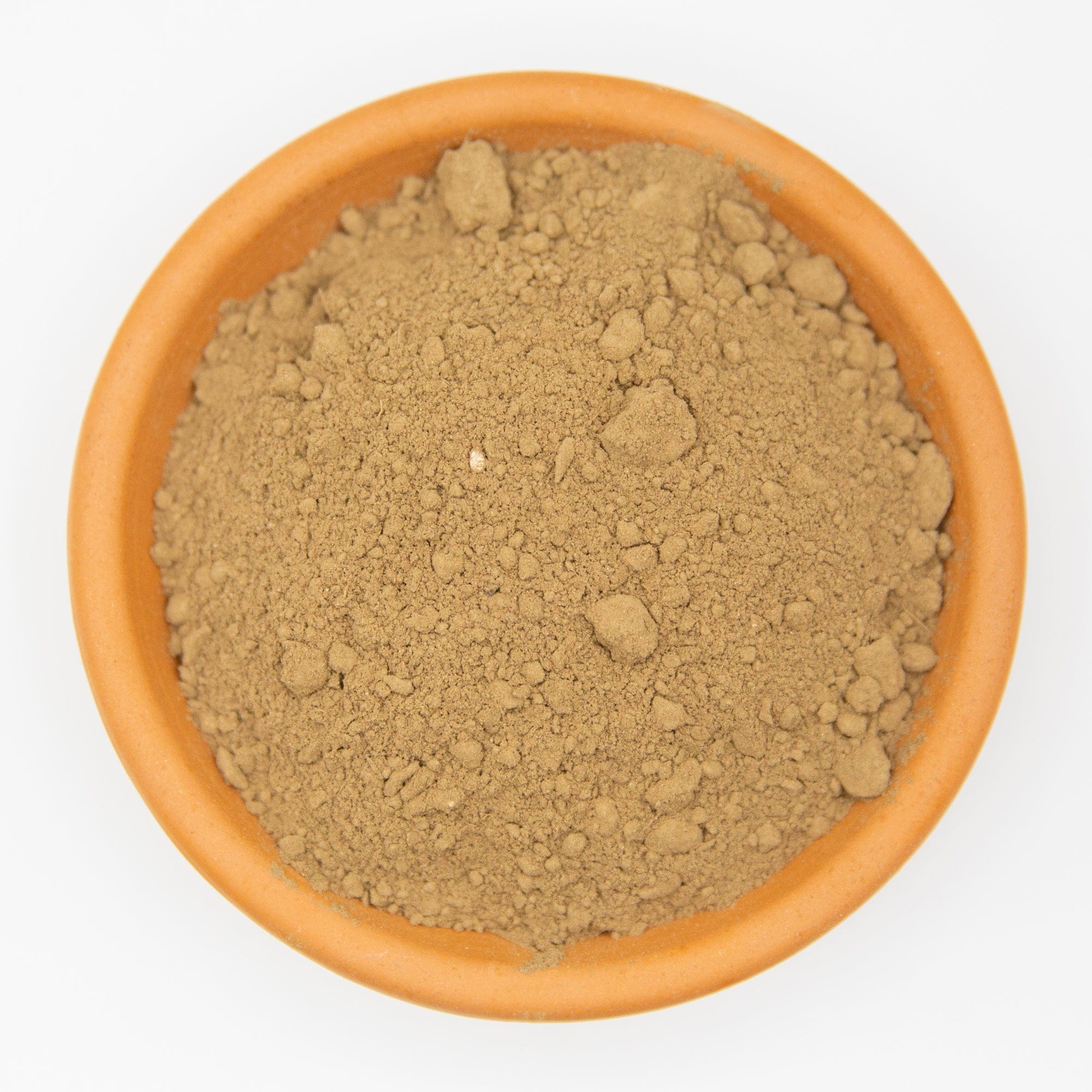Grow Bigger and Healthier Plants with Mineralised Phosphate Powder!
If you're looking to increase the size and quantity of blooms in your garden, Mineralised Phosphate Powder (Bat Guano) can help. This exceptional product is found in Indonesian caves where fruit-eating bats live, and it contains high levels of phosphate and calcium. MPP™ is exclusive to DRGT in Australia and is screened through a 200-mesh screen for consistency.
Mineralised Phosphate Powder can be used for a wide range of plants, including vegetables, fruits, herbs, flowers, vines, trees, and shrubs. With a guaranteed analysis of 9.00% available phosphate (P2O5) and 10.00% calcium (Ca), MPP™ can be applied in gardens, landscaping, containers, and raised beds. Simply use 1 to 2 cups per square meter for best results.
Mineralised Phosphate Powder is packed with vital nutrients, including phosphorus, calcium, and trace minerals. By incorporating these necessary nutrients and encouraging the development of advantageous microbes, MPP™ can enhance soil health and fertility, resulting in raised plant yield and general health. It can also be used as a natural supply of nutrients with an immediate and sustained release. Additionally, MPP™ can make nutrient-deficient soils more fertile, providing an effective solution to common gardening problems.
Usage Directions:
Directions for use in the garden and landscape
Use 1 to 2 cups per square meter.
Transplanting and premixing soil for potted plants and planter boxes:
1 tsp. per 3 liters of soil or growing medium. Gently dig into soil surface once a month or as desired.
Top dressing
1 tsp. per 3 litres of soil or growing medium. Gently dig into soil surface once a month or as desired. For tea mix: 2 tbsp. per 5L of water.
Other Features:
- Packed with a wide range of vital nutrients, such as phosphorus, calcium and trace minerals.
- Enhances soil health and fertility by incorporating necessary nutrients and encouraging the development of advantageous microbes.
- Can be utilized to raise plant yield and general health.
- Can be utilized as a natural supply of nutrients with an immediate and sustained release.
- Can be used to make nutrient-deficient soils more fertile.

FAQs:
What is Mineralised Phosphate Powder (Fruit Bat Guano)?
A finely screened, natural bat guano from Indonesian caves that’s rich in available phosphate and calcium. It’s screened to a 200-mesh for consistency and is exclusive to DRGT in Australia.
What’s the nutrient analysis?
Guaranteed analysis on the product page: 9% available phosphate (as P₂O₅) and 10% calcium.
What does bat guano do for plants?
It boosts flowering and fruit set, supports root strength, and helps overall plant health by supplying readily available phosphorus plus calcium. It also feeds beneficial soil microbes for longer-lasting fertility.
Which plants is bat guano best for?
Great for flowering and fruiting plants—veggies, herbs, berries, fruit trees, ornamentals, vines, cacti, and succulents. Avoid heavy use on phosphorus-sensitive natives unless you’ve tested your soil.
How do I use bat guano in garden beds?
Apply 1–2 cups per square metre. Work it into the top 5–10 cm of soil and water in well.
How do I use bat guano in pots/planter boxes?
Mix 1 teaspoon per 3 litres of potting mix at transplant, or top dress at the same rate and gently scratch in. Re-apply monthly or as needed.
How do I make a guano “tea”?
Use 2 tablespoons per 5 L of water. Stir, bubble, or steep, then drench soil. Strain if you’re using emitters. Start light, observe plant response, and adjust.
Is bat guano fast-acting or slow-release?
Both. Finer particles and soluble phosphorus give a quick bump to blooms, while the organic matrix and calcium provide a steadier release over time.
When is the best time to apply?
Before and during early bloom for most annuals; for perennials and fruit trees, apply at bud swell and again after fruit set if needed. In veg, use lightly to build reserves without pushing soft growth.
Can bat guano burn plants?
It’s gentler than synthetic P sources, but overapplication can still stress plants. Stick to label rates and avoid piling it against stems.
Is bat guano safe for organic gardening?
Yes—bat guano is a natural input widely used in organic systems. Handle like any fine organic powder: gloves on, mask if you’re making teas or working with dust, and wash hands after use.
Any health or safety tips while handling?
Avoid inhaling dust, wear gloves, and mix outdoors or in a well-ventilated area. Store sealed and dry. Keep away from kids and pets.
Does bat guano change soil pH?
It’s mildly alkaline due to the calcium content, which can buffer acidic soils. If your pH is already high, monitor pH and use sparingly.
Can I use bat guano with Australian natives/proteaceae?
Most phosphorus-sensitive natives dislike extra P. If you must, use very lightly and confirm with a soil test; otherwise, pick a low-P native-safe fertiliser.
What’s the difference between bat guano and rock phosphate?
Bat guano is partially pre-digested and more plant-available than raw rock phosphate, so it tends to act faster at lower rates. Rock phosphate is slower and more dependent on soil biology and acidity.
Bat guano vs seabird guano—what changes?
High-P bat guanos (from fruit-eating species) emphasize phosphorus and bloom; seabird guano formulations vary but often carry more nitrogen or a broader NPK. Choose bat guano when you need a flower/fruit push.
Can I combine bat guano with other DRGT amendments?
Yes. It pairs well with calcium-bearing inputs (in moderation), kelp/seaweed, worm castings, malted barley, and complete blends like Bud & Bloom. Don’t stack multiple high-P sources at full rate.
Is bat guano compatible with mycorrhizae and biology?
Yes—moderate P plus organic carbon supports microbes. Avoid over-doing P; extreme levels can suppress some symbioses. Water in with compost tea or worm-cast leachate if you like.
Will bat guano work in coco or soilless mixes?
Yes—top dress and water in, or pre-mix at transplant. In inert media, biology is leaner, so consider adding compost/worm castings or inoculants to help mineralisation.
Can I run bat guano through drip systems?
Not recommended. Even when strained, fine organics can clog emitters. Apply as a top dress or soil drench, not through micro-irrigation.
How often should I reapply?
Monthly for containers at the light teaspoon-per-3-L rate is a good starting point. In beds, 1–2 cups/m² split into two lighter applications across the bloom window is safer than one heavy dump.
How soon will I see results?
Typically within 1–2 weeks on actively growing plants, faster if applied as a correctly brewed/strained drench.
Does bat guano smell or attract pests?
It has a mild earthy/manure scent—nothing like raw manures. Work it into soil and water in to limit odour. It doesn’t typically attract pests when used correctly.
Is there a withholding period for edibles?
None required when used as directed. Rinse produce as you normally would.
Can I overdo phosphorus? What are the signs?
Yes. Dark, dull foliage, micronutrient lockouts (especially iron/zinc), stalled growth, or leaf tip burn can all indicate excess. If in doubt, ease off and flush with plain water.
How long does bat guano last in storage?
Stored cool, dry, and sealed, it remains effective for years. Keep moisture out to prevent caking and microbial activity in the bag.
What mesh size is bat guano screened to, and why does that matter?
200-mesh. Finer screening means more uniform application, quicker availability, and less “chunky” residue when making teas.
Is bat guano the same as “Super Phos” or other high-P guanos?
It’s a high-P bat guano, but analyses vary by source and species. Always go by the guaranteed analysis on the DRGT label for rates.
Will bat guano raise calcium too much?
It supplies calcium (10%). If your soil or water is already high in Ca, watch for antagonism with magnesium and potassium; balance with K/Mg inputs if needed.
Can I use bat guano as a compost activator?
Yes—sprinkle thinly through compost layers to accelerate decomposition. It’s potent, so a little goes a long way.
Is bat guano sustainably sourced?
DRGT’s product is cave-harvested and screened; as with any guano, ethical sourcing matters. Use what you need, not more, and prefer suppliers who protect habitats and follow regulations.
Customer results to expect?
Common feedback: stronger blooms, happier cacti/succulents, and visible turnaround in dull beds when used as a top dress and watered in.
Quick application cheat sheet (recap)?
• Beds: 1–2 cups/m²
• Pots: 1 tsp per 3 L mix or monthly top dress at same rate
• Tea: 2 tbsp per 5 L water; drench soil; strain if needed
• Water in thoroughly after application
Troubleshooting—if plants don’t respond?
Check pH (target 6.2–6.8 for most crops), ensure adequate potassium and micronutrients, verify watering practices, and avoid cold, biologically inactive soils—add compost/worm castings to kickstart mineralisation.
Is bat guano pet-safe?
Keep the bag out of reach and don’t let pets eat the granules or lick freshly applied areas. Once watered in and incorporated, risk is minimal.
What does bat guano pair best with?
For a full bloom program: Bud & Bloom blend for balance, Kelp Meal for hormones/micros, and Potash 0-0-41 if your soil test shows low K. Add mycorrhizae at transplant for synergy.
Shipping/availability?
Sold in 500 g and 1 kg sizes. If sold out online, check back or contact the Bellambi store for restock timing.
Why choose bat guano over a synthetic bloom booster?
You get a gentler, microbe-friendly phosphorus source with added calcium and trace elements, supporting plant health and flavour without the salt shock of synthetics.
Will bat guano stain patios or decks?
It can leave light organic residue. Brush off spills and water in on soil, not hard surfaces.
What’s the simplest “first-time user” recipe?
Top dress 1 tsp per 3 L pot, lightly scratch in, and water. For beds, 1 cup/m² worked into the top layer before bloom—easy.



